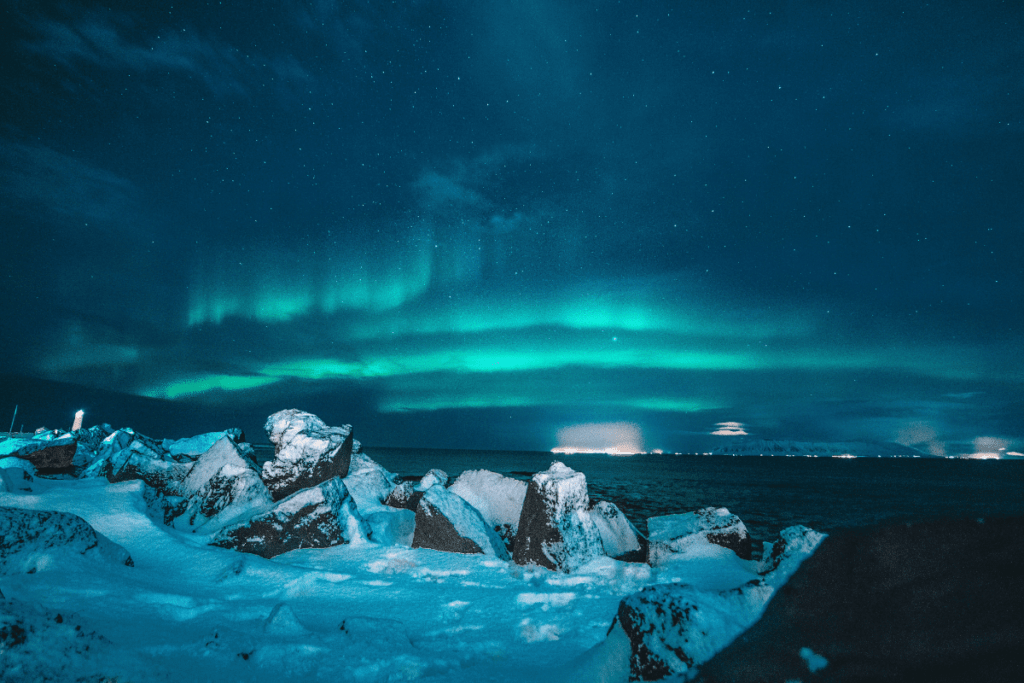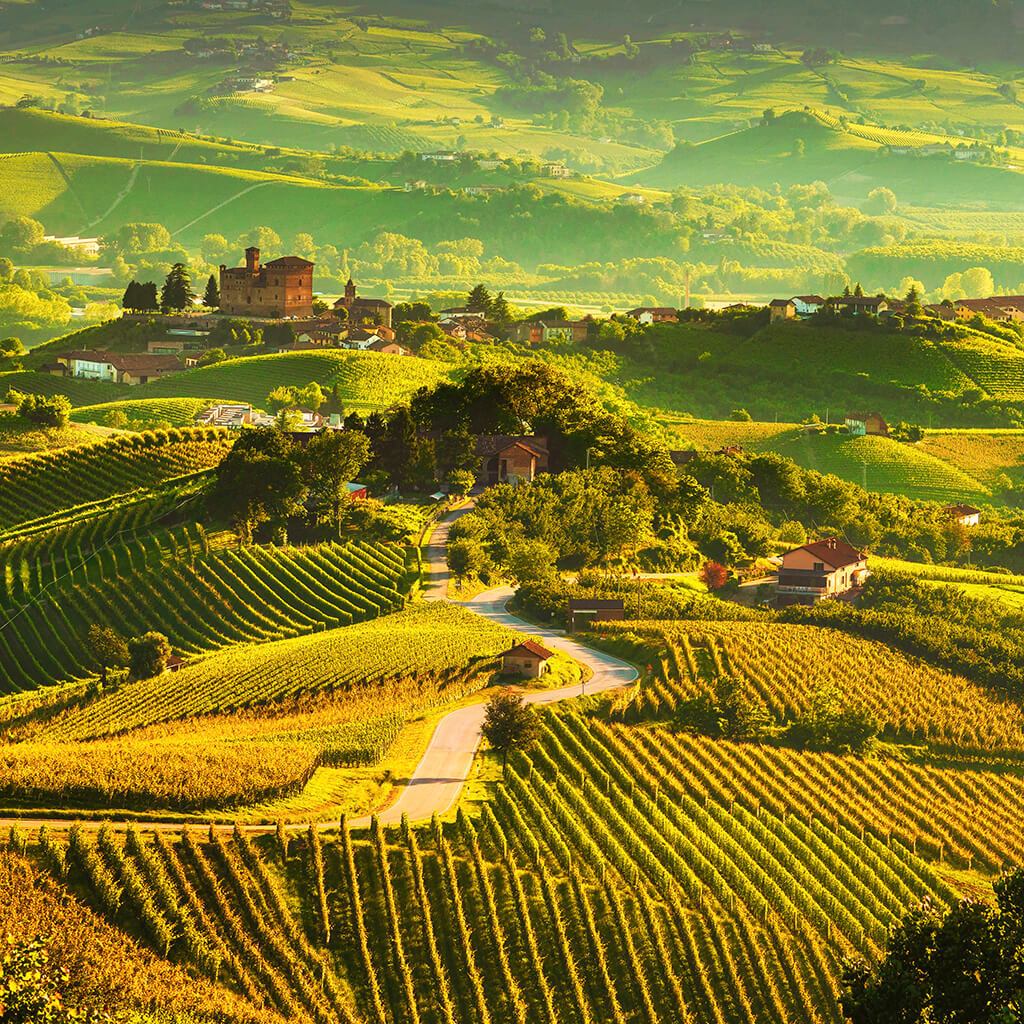
Anyone who has gone camping, or lived in a remote area, knows the wonder of looking up at a clear sky filled with glistening stars. But most of us haven’t looked up and seen bright, neon swirls of electrically-charged particles. In order to see that (hint: it’s the northern lights!) you probably need to travel. And while there are a lot of different countries out there where seeing the aurora borealis is possible, we like Iceland’s chances the best. Here’s everything you need to know if you want to see the Iceland northern lights.
What Are the Northern Lights
The northern lights are also known as the aurora borealis (a much cooler name if you ask us). Regardless of what you call them, they belong on your (go on, you can add it… we’ll wait). We can thank Galileo for the cool name when in 1623 he combined the words “Aurora,” the Roman goddess of dawn, and “Boreas,” the Greek word for the northern wind personified to describe this light phenomenon.
In terms of how they look, it varies. The aurora borealis won’t always look exactly the same—and photos, no matter how high-tech, won’t be able to fully capture the experience. Generally speaking, the aurora borealis look like brilliant dancing waves of color in the night sky, warped, vibrant, and alive.
Now the science. And bear with us, here. It’s a bit complex. The aurora borealis happen when electrically charged particles fly off of the sun. Some 40 hours later, the Earth’s magnetic field picks up these electrically charged particles. Between 20 and 200 miles above the Earth, these particles begin colliding with oxygen and nitrogen atoms. The different colors of the auroras happen based on which atoms were struck and at what altitude.
- Blue: Less than 60 miles above the earth
- Purple: 60 miles above the earth
- Green: 100 miles above the earth
- Red: 150 miles and more above the earth
While this phenomenon can be seen in parts of Canada, Sweden, Norway, Finland, Alaska, and even Russia, Iceland is our pick for a number of reasons. For one, you can see the aurora borealis from anywhere in Iceland (even it’s capital Reykjavík!). That’s because Iceland is part of the “northern lights belt,” an area where viewers have the best chance of seeing the lights.
Also, Iceland northern lights tend to have the most intense light shows. This is in part due to the fact that Iceland is the least populated country in Europe, with only a little over 370,000 inhabitants. It also has the lowest population density (there are only 3 people per kilometer or 8 people per square mile).
Needless to say, you won’t be competing with any light pollution on your Iceland northern lights trip, making the lights even more vibrant.
How to See the Iceland Northern Lights
1. Set Your Expectations
Okay, we hate to be that person but It’s actually part of what makes the experience so special and unique. You can’t just follow a recipe, and voila, the northern lights appear! You can do everything right, and just not get lucky. But before you get mopey, know that with the right preparation, itinerary, and know-how, you can significantly improve your chances.
Also, knowing this beforehand means you can plan a trip to fully experience all of Iceland, not just the lights. There’s a lot to see. The Travel Yogi offers a full 7-day Iceland Yogi Adventure that not only sets you up for success with the northern lights but is also packed with other of Iceland’s greatest wonders, from exploring waterfalls and geysers to relaxing in the Blue Lagoon. You’ll want to check this one out.
2. Go In the Winter or Spring
While technically the aurora borealis can happen at any time of year, the only time you will be able to really see them is when it is very dark out. In the winter and spring months, Iceland is, you guessed it, extremely dark. We’re talking 19 hours of darkness kind of dark. While this might make it a bit difficult to live in Iceland, it is ideal for seeing the aurora borealis. Experts suggest going between September and April for the best chances of seeing Iceland northern lights.
The Iceland Travel Yogi Adventure takes place three times during this window of opportunity: In October, November, and February. Specifically designed around the best time for viewing, this all-included adventure does all the heavy lifting for you.
3. Stay Up Late
Most sightings of the aurora borealis happen between 11 pm and 2 am. (Yes, you read that right, two in the morning!). So, have a late-night cup of joe, or make sure to sleep in late the day of because you will need to keep those eyes peeled at the sky until 2 am!
You know what helps pass the time when you’re gazing up at the sky in anticipation? Relaxing in a Viking Pool or jacuzzi with cold and warm drinks at the ready. Yeah, the TheTravel Yogi Iceland Adventure provides that, too.
4. Go Now
Okay, we’re not going as far as to say that the Northern lights are disappearing (they’re not!), but the northern light’s visibility does fluctuate depending on a solar life cycle of 11 years.
Basically, the solar life cycle moves between heightened and lowered solar activity. When there’s less solar activity, there are fewer sunspots and solar flares, which sends fewer solar particles into the Earth’s magnetic field, thus creating fewer aurora borealis.
The sun will begin approaching its solar minimum (when there is the least amount of solar activity) in 2025. So… not to be alarmist, but … it’s time to book that trip to Iceland before 2025 comes around!
Been There Done That?
As life-long travelers, we don’t really believe in “doing” a place. If you see the aurora borealis, you’ll know what we mean. It doesn’t get old. That being said, if you are feeling antsy to try something else after you experience the northern lights… have you heard of the southern lights? Never heard of them? Also known as the aurora australis, these lights are just as cool. Just on a completely different part of the globe.
And if Iceland isn’t your jam, we have expert-planned trips to Bali, Croatia, Patagonia, and 12 other must-see destinations. We cannot wait to adventure with you.

